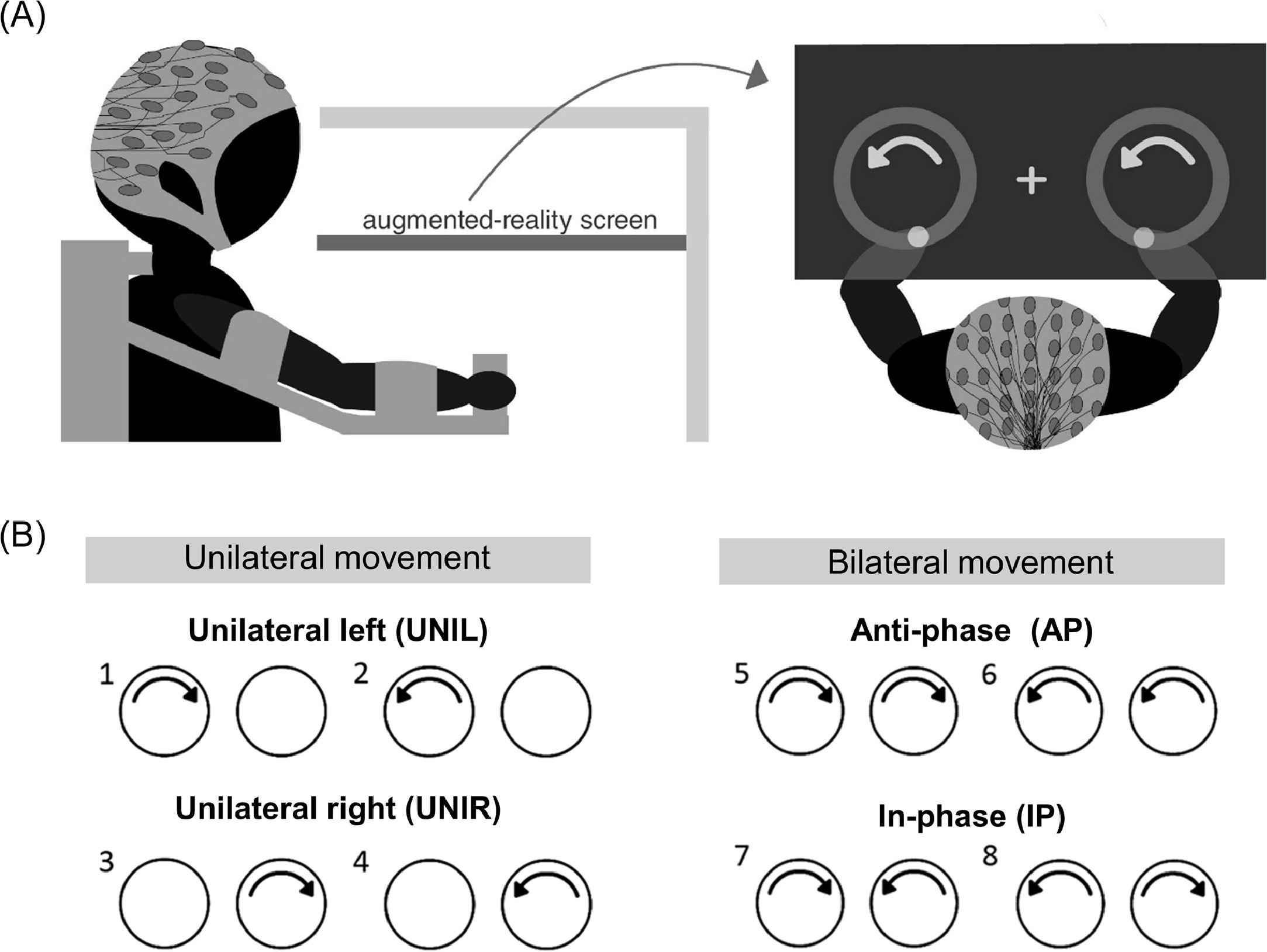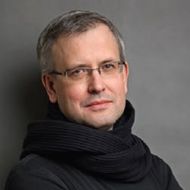Two-handed Movements Require More Neural Effort As People Grow Older

A team of researchers from Max Planck Institute for Human Cognitive and Brain Sciences (Leipzig) has discovered that the age-related decline in bilateral anti-phase movement is linked to differences in alpha and beta neural activity. Among the researchers was Vadim Nikulin, Leading Research Fellow of the Centre for Cognition & Decision Making at HSE University.
The research, entitled ‘Alpha and beta neural oscillations differentially reflect age-related differences in bilateral coordination’ has been published in the journal Neurobiology of Aging.
Bilateral coordination is the ability to coordinate the left and right sides of the body while in motion—an essential skill in everyday life. Those with impaired bilateral coordination can have difficulty with tasks such as clapping their hands or opening jars.
There are two types of coordination: in-phase and anti-phase. During in-phase movements (such as catching a ball with both hands), the same muscles on both sides contract synchronously. During anti-phase movements (such as moving both arms to the same side at once), the muscles contract in an alternating fashion.
Aging has been linked to a decline in bilateral coordination, particularly anti-phase coordination. The researchers proposed that age-related changes in in-phase and anti-phase coordination in older people are related to the fact that these processes are controlled by different mechanisms in the brain linked to neural oscillations.
To test this hypothesis, the researchers conducted an experiment using electroencephalography (EEG). The participants comprised 25 younger subjects with an average age of 26, and 25 older subjects with an average age of 70.

The subjects sat at a transparent table featuring a depiction of one out of eight possible circular arm movements. They were able to see their arms under the table. The subjects were asked to repeat a circular motion shown on the screen in time with a metronome. Two of the eight possible motions were in-phase and two were anti-phase. The remaining four motions required the use of one arm only. The researchers used multichannel EEG to record the subjects’ brain activity.
The researchers discovered that compared to the younger group, the older subjects displayed lower synchronization between different sides of the body during anti-phase movements. This explains why, for example, it becomes more difficult to perform such movements with age.
Decreased synchronization during anti-phase movements was also linked to differences in brain activity while performing the movements. In younger subjects, the power of alpha waves in the right, non-dominant hemisphere of the brain decreased less during in-phase movements than during anti-phase movements. In older subjects, the power of alpha waves fell by the same amount during both types of movement.
It is suggested that the power of alpha waves is linked to the level of active involvement in solving the given task. The lack of reduction in this power in the non-dominant hemisphere may reflect a compensation for the loss of these skills in older subjects, for example, that they need to more actively concentrate on the tasks.
Comparable differences were observed between the power of beta waves in both age groups. In the younger group, beta waves decreased equally with both types of movement, while in the older group, beta waves fell more during anti-phase movements than during in-phase movements. This greater decrease may also reflect the need for additional processing of sensorimotor information during anti-phase coordination.

Vadim Nikulin, Leading Research Fellow of the Centre for Cognition & Decision Making
‘Neural changes occur in the early stages of various pathologies of the brain. EEG measurement during bilateral movements could potentially uncover the early development of motor disorders, such as for instance Parkinson’s disease.’
Vadim Nikulin
See also:
Researchers Identify Link between Bilingualism and Cognitive Efficiency
An international team of researchers, including scholars from HSE University, has discovered that knowledge of a foreign language can improve memory performance and increase automaticity when solving complex tasks. The higher a person’s language proficiency, the stronger the effect. The results have been published in the journal Brain and Cognition.
‘Engagement in the Scientific Process’: HSE Launches Master’s Programme in Neurobiology
The HSE University Academic Council has elected to launch a new Master's programme in Neurobiology for students majoring in Biology. Students of the programme will have access to unique equipment and research groups, providing them with the knowledge and experience to pursue careers in science, medicine and pharmacy, IT and neurotechnology, and education and HR services.
Scientists Discover That the Brain Responds to Others’ Actions as if They Were Its Own
When we watch someone move their finger, our brain doesn’t remain passive. Research conducted by scientists from HSE University and Lausanne University Hospital shows that observing movement activates the motor cortex as if we were performing the action ourselves—while simultaneously ‘silencing’ unnecessary muscles. The findings were published in Scientific Reports.
Russian Scientists Investigate Age-Related Differences in Brain Damage Volume Following Childhood Stroke
A team of Russian scientists and clinicians, including Sofya Kulikova from HSE University in Perm, compared the extent and characteristics of brain damage in children who experienced a stroke either within the first four weeks of life or before the age of two. The researchers found that the younger the child, the more extensive the brain damage—particularly in the frontal and parietal lobes, which are responsible for movement, language, and thinking. The study, published in Neuroscience and Behavioral Physiology, provides insights into how age can influence the nature and extent of brain lesions and lays the groundwork for developing personalised rehabilitation programmes for children who experience a stroke early in life.
Scientists Uncover Why Consumers Are Reluctant to Pay for Sugar-Free Products
Researchers at the HSE Institute for Cognitive Neuroscience have investigated how 'sugar-free' labelling affects consumers’ willingness to pay for such products. It was found that the label has little impact on the products’ appeal due to a trade-off between sweetness and healthiness: on the one hand, the label can deter consumers by implying an inferior taste, while on the other, it signals potential health benefits. The study findings have been published in Frontiers in Nutrition.
Internal Clock: How Heart Rate and Emotions Shape Our Perception of Time
Our perception of time depends on heart rate—this is the conclusion reached by neuroscientists at HSE University. In their experiment, volunteers watched short videos designed to evoke specific emotions and estimated each video's duration, while researchers recorded their heart activity using ECG. The study found that the slower a participant's heart rate, the shorter they perceived the video to be—especially when watching unpleasant content. The study has been published in Frontiers in Psychology.
Scientists Develop New Method to Detect Motor Disorders Using 3D Objects
Researchers at HSE University have developed a new methodological approach to studying motor planning and execution. By using 3D-printed objects and an infrared tracking system, they demonstrated that the brain initiates the planning process even before movement begins. This approach may eventually aid in the assessment and treatment of patients with neurodegenerative diseases such as Parkinson’s. The paper has been published in Frontiers in Human Neuroscience.
HSE Scientists Test New Method to Investigate Mechanisms of New Word Acquisition
Researchers at the HSE Centre for Language and Brain were among the first to use transcranial alternating current stimulation to investigate whether it can influence the acquisition of new words. Although the authors of the experiment have not yet found a link between brain stimulation and word acquisition, they believe that adjusting the stimulation parameters may yield different results in the future. The study has been published in Language, Cognition and Neuroscience.
When Thoughts Become Movement: How Brain–Computer Interfaces Are Transforming Medicine and Daily Life
At the dawn of the 21st century, humans are increasingly becoming not just observers, but active participants in the technological revolution. Among the breakthroughs with the potential to change the lives of millions, brain–computer interfaces (BCIs)—systems that connect the brain to external devices—hold a special place. These technologies were the focal point of the spring International School ‘A New Generation of Neurointerfaces,’ which took place at HSE University.
How the Brain Responds to Prices: Scientists Discover Neural Marker for Price Perception
Russian scientists have discovered how the brain makes purchasing decisions. Using electroencephalography (EEG) and magnetoencephalography (MEG), researchers found that the brain responds almost instantly when a product's price deviates from expectations. This response engages brain regions involved in evaluating rewards and learning from past decisions. Thus, perceiving a product's value is not merely a conscious choice but also a function of automatic cognitive mechanisms. The results have been published in Frontiers in Human Neuroscience.


